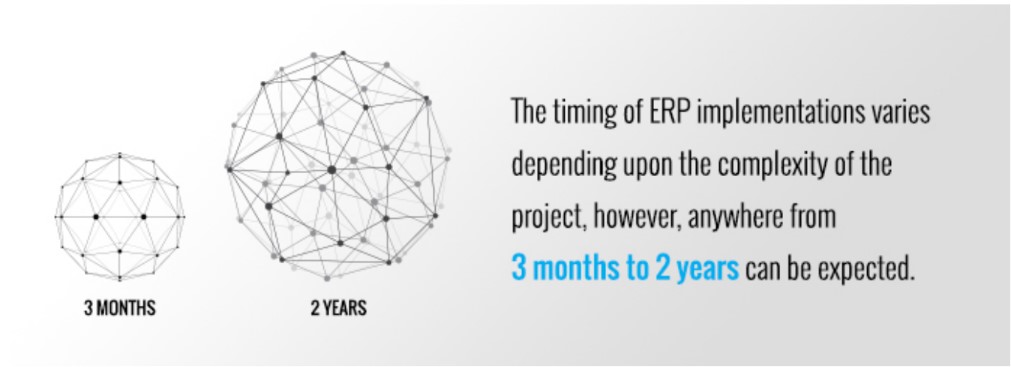You’ve selected your software and provider. You have an idea of what the end-result will look like and your team is comfortable with moving forward. Ready for the ERP implementation process? Keep reading to learn more.
What Is ERP Implementation?
ERP implementation is the process of introducing the new software while phasing out existing processes.
Implementing ERP systems looks different depending on the project, but most implementations involve an on-site team with remote assistance. Generally, the process is managed by an internal staff or by a team brought in by the vendor.
An ERP implementation methodology involves a series of phases that allow for a gradual, systematic transition in the evolution of your technology solutions. The implementation projects kicks off with an onsite operational review and analysis followed by system setup and configuration, initial conversation, system integration and modifications, training and conference room pilot and final conversation and “go live.” This broad scope of services helps ensure a successful “go live,” promotes continued user satisfaction and maximizes the long-term usefulness of the total system.
ERP software will be installed on-site, on your company’s computers and servers. With an on-premise software solution, you have hands-on control over your hardware. You don’t need to rely on an internet connection to access your ERP solution, and even though it requires a larger initial investment, it can be more cost-effective, since all the monitoring and management services are performed by in-house staff.
Cloud-based solutions, on the other hand, are managed off-site by an ERP provider. This lowers up-front technology and implementation costs and allows hardware upgrades to be handled off-site, with fewer disruptions to existing workflows. With cloud-based solutions, companies can reduce or eliminate their data center altogether and provides a single point of contact and accountability for all hardware, operating system, software, monitoring application accessibility and database back-ups.
The timing of implementations varies depending upon the complexity of the project, but anywhere from three months to five years can be expected. To stay on track, it’s best to determine a go-live date at the start so you can find out what’s required to meet that date and take care of everything you can in advance.

Common Challenges of ERP Implementation and Ways to Avoid Them
Like any business process, ERP implementations often have challenges. Below are a few of the more common issues, along with ways to avoid them:
- Resistance to change: When users are apprehensive, the process will be slower. To overcome this, educate your team from the start. Share why you’re making changes and answer any questions they may have. Education is key.
- A lack of clear goals: If you don’t know what the software needs to do, you will likely need to add additional functionality as the implementation takes place. If these were not accounted-for from the start, there could be delays. Take the time to ask questions and fully understand the software you’re selecting. Also, be transparent with your business to protect your investment.
- Customization delays: If more customization is needed than what is stated from the start, there will be delays. Just like setting clear goals, transparency is key.
- Too many opinions: While it’s important to have input from key team members, one person should serve as the project liaison. By giving the vendor a single point of contact, there will be less confusion.
- Customer impacts: Even when the cut-over is scheduled after-hours, there may be a few minor inconveniences along the way. By understanding there may be some bumps in the road and letting customers know why they’re taking place, you can mitigate the effects.
Your implementation will be an exciting time, but it could be stressful as well. Like all business ventures, preparation and flexibility are critical for success.